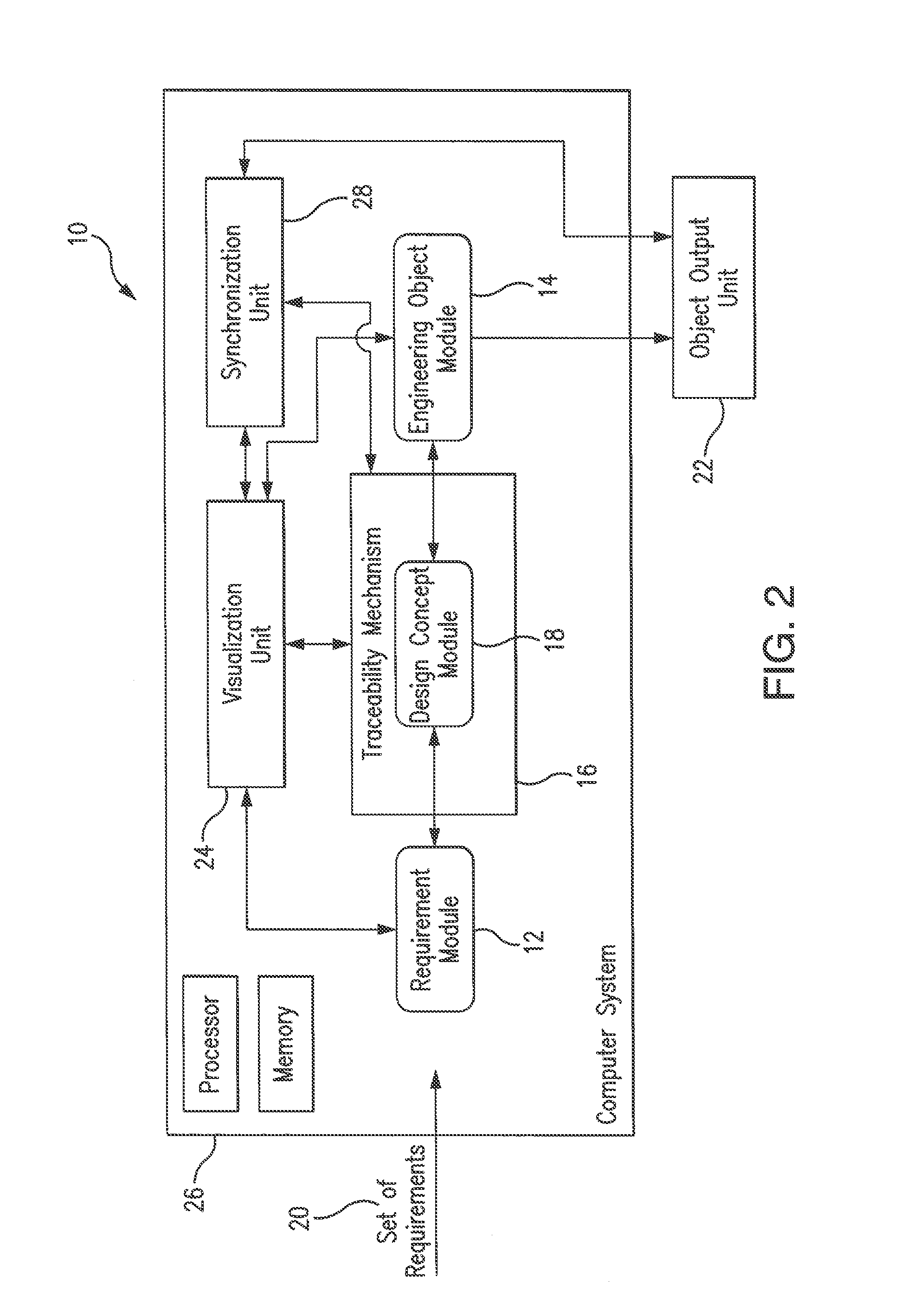Method and system for ontology-enabled traceability in design and management applications
a technology of design management application and traceability, applied in the field of engineering object development, can solve the problems of not being able to achieve the goal of capturing the rationale of requirements, many questions that a user might want to ask about requirements and/or the system structure remain unanswered or omitted, and the state-of-the-art capability for requirements visualization falls short of these goals
- Summary
- Abstract
- Description
- Claims
- Application Information
AI Technical Summary
Benefits of technology
Problems solved by technology
Method used
Image
Examples
Embodiment Construction
[0074]The present system and method are based on a new approach to requirements traceability during the development of an engineering object which may be useful in design and management applications in a variety of areas.
[0075]Now that systems engineering models and documents containing thousands and, sometimes, tens-of-thousands of requirements are commonplace, requirements modeling and traceability management tools are an indispensible enabler of the system development process.
[0076]Traceability mechanisms allow for an understanding of how and why various parts of the system development process are connected, thereby providing development teams a greater confidence in meeting objectives, assessing the impact of any change in design, behavior, a.k.a. status, tracking progress, conducting trade-off analysis of cost against other measures of effectiveness, and formalizing procedures for system validation and verification. Traceability mechanism works together with visual formulations...
PUM
 Login to View More
Login to View More Abstract
Description
Claims
Application Information
 Login to View More
Login to View More - R&D
- Intellectual Property
- Life Sciences
- Materials
- Tech Scout
- Unparalleled Data Quality
- Higher Quality Content
- 60% Fewer Hallucinations
Browse by: Latest US Patents, China's latest patents, Technical Efficacy Thesaurus, Application Domain, Technology Topic, Popular Technical Reports.
© 2025 PatSnap. All rights reserved.Legal|Privacy policy|Modern Slavery Act Transparency Statement|Sitemap|About US| Contact US: help@patsnap.com



